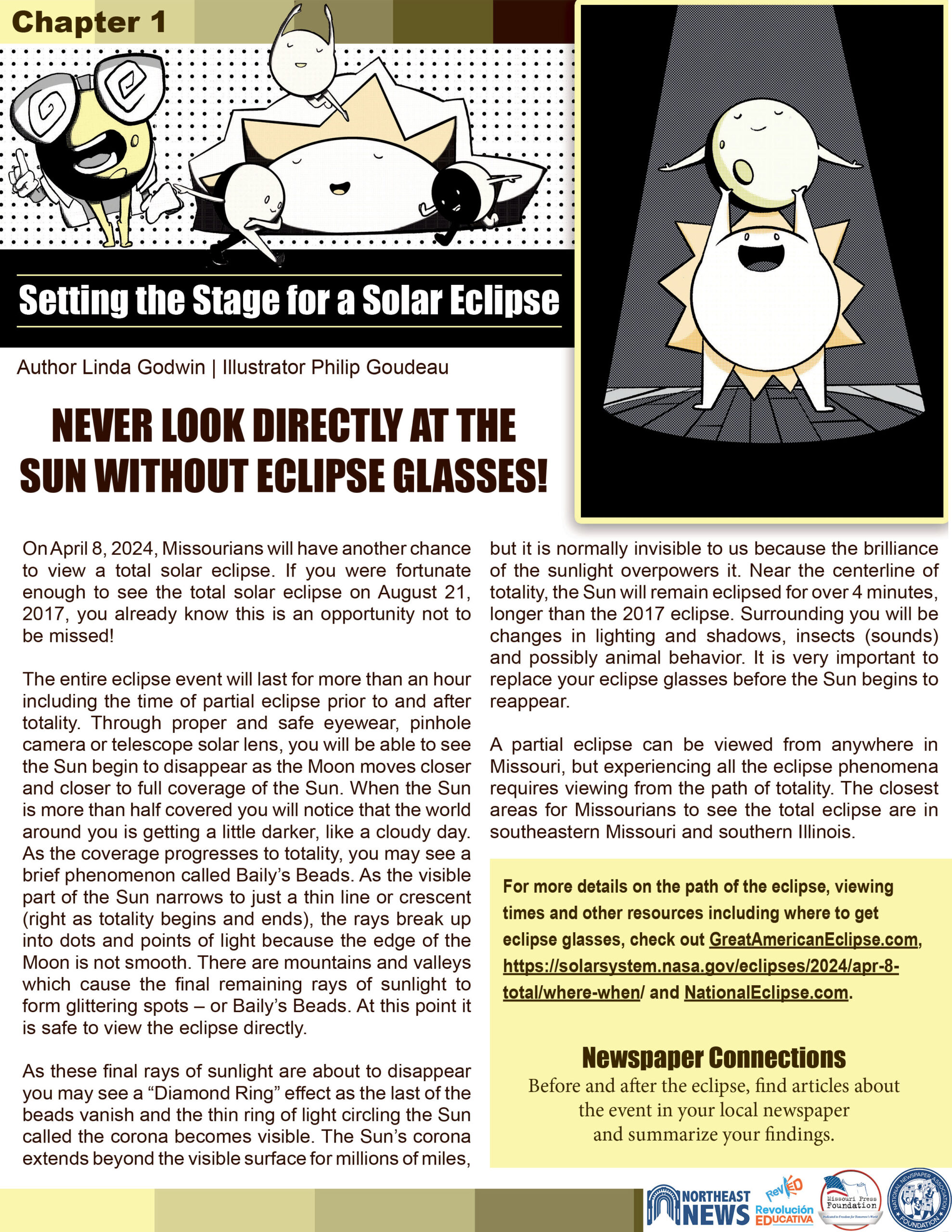
Author Linda Godwin | Illustrator Philip Goudeau
NEVER LOOK DIRECTLY AT THE SUN WITHOUT ECLIPSE GLASSES!
On April 8, 2024, Missourians will have another chance to view a total solar eclipse. If you were fortunate enough to see the total solar eclipse on August 21, 2017, you already know this is an opportunity not to be missed!
The entire eclipse event will last for more than an hour including the time of partial eclipse prior to and after totality. Through proper and safe eyewear, pinhole camera or telescope solar lens, you will be able to see the Sun begin to disappear as the Moon moves closer and closer to full coverage of the Sun. When the Sun is more than half covered you will notice that the world around you is getting a little darker, like a cloudy day. As the coverage progresses to totality, you may see a brief phenomenon called Baily’s Beads. As the visible part of the Sun narrows to just a thin line or crescent (right as totality begins and ends), the rays break up into dots and points of light because the edge of the Moon is not smooth. There are mountains and valleys which cause the final remaining rays of sunlight to form glittering spots – or Baily’s Beads. At this point it is safe to view the eclipse directly.
As these final rays of sunlight are about to disappear you may see a “Diamond Ring” effect as the last of the beads vanish and the thin ring of light circling the Sun called the corona becomes visible. The Sun’s corona extends beyond the visible surface for millions of miles, but it is normally invisible to us because the brilliance of the sunlight overpowers it. Near the centerline of totality, the Sun will remain eclipsed for over 4 minutes, longer than the 2017 eclipse. Surrounding you will be changes in lighting and shadows, insects (sounds) and possibly animal behavior. It is very important to replace your eclipse glasses before the Sun begins to reappear.
A partial eclipse can be viewed from anywhere in Missouri, but experiencing all the eclipse phenomena requires viewing from the path of totality. The closest areas for Missourians to see the total eclipse are in southeastern Missouri and southern Illinois.
For more details on the path of the eclipse, viewing times and other resources including where to get eclipse glasses, check out GreatAmericanEclipse.com, https://solarsystem.nasa.gov/eclipses/2024/apr-8- total/where-when/ and NationalEclipse.com.
Newspaper Connections
Before and after the eclipse, find articles about the event in your local newspaper and summarize your findings.



















